I was staying at my friend Shelly’s place for a couple of weeks in Fremantle, Western Australia, and while the Perth area has quite a lot to see (including an Australian Football team, and some very cute marsupials that aren’t at all ‘big rats’), she had suggested we take some day trips around the region to get a more rounded overview of the state, and to see other interesting places. In the event, although we visited all these places, a couple we did so as part of longer trips, but they are all accessible on day trips from Perth. One of these longer journeys we took was a trip north to explore the wildflower season.
Mediaeval Carnivale, Balingup
Balingup is a very small town in the rolling green fields of southern Western Australia, about halfway between Perth and the south coast. It has a bit of a reputation as being somewhat ‘hippie’; my friend Shelly suggested it would be a good place for me to move to, and it’s the sort of town that if I did, I’d probably never wear shoes again (not that I wore shoes for any of the time I was there anyway, but you get the idea). It’s most noted for ‘magic’ – note that the kind of magic in question is less of the ‘hubble bubble’ kind and more of the ‘why is Harry Potter flying a purple elephant over a field of tentacles’ kind; at certain times of the year the police set up roadblocks in the area to prevent the ‘export’ of, shall we say, ‘dodgy’ mushrooms. They play up to it a bit; there’s even a café there called ‘The Mushroom’. It sells hash browns. Disappointingly, I imagine not that sort of hash though.
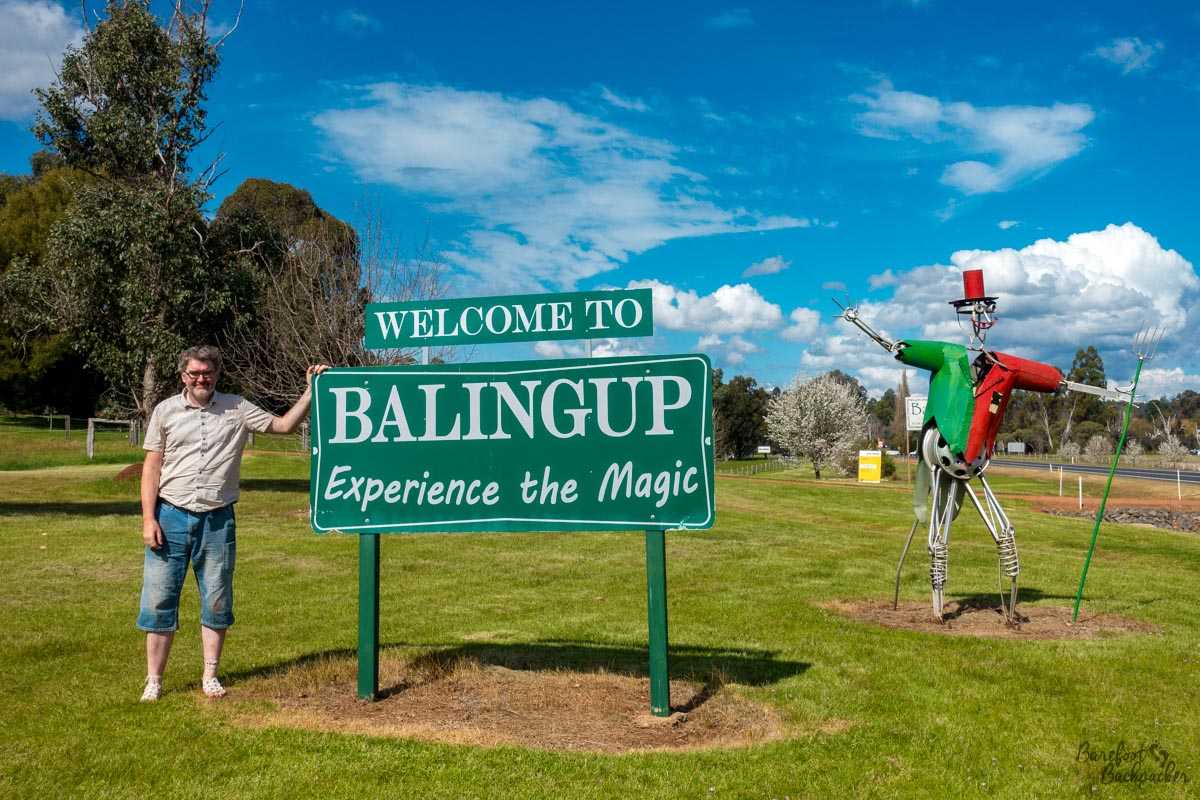
Welcome to Balingup. Experience the “Magic”. I have no idea what that scarecrow-like figure is doing. What do you mean ‘which one’?!
We were there for something a little more traditional – something my American friends would call a RenFaire. Every year at the end of August the town hosts a mediaeval festival, complete with costumes, entertainment, and of course dragons. We got there just in time to see the entry parade, led by the king and queen of the festival, where many of the performers and merchants marched through the gate and down the main drag. This included soldiers, magicians, circus performers, dragons, and rather oddly, several camels. You could pay to ride these camels around the faire later in the day – one of my friends has stated that, even upon pain of death, no-one should ever ride a camel, because she’s found them to be incredibly uncomfortable to the point of being painful for days afterwards, and nasty little buggers to boot.

Part of the welcoming procession; note the dragon in the background.
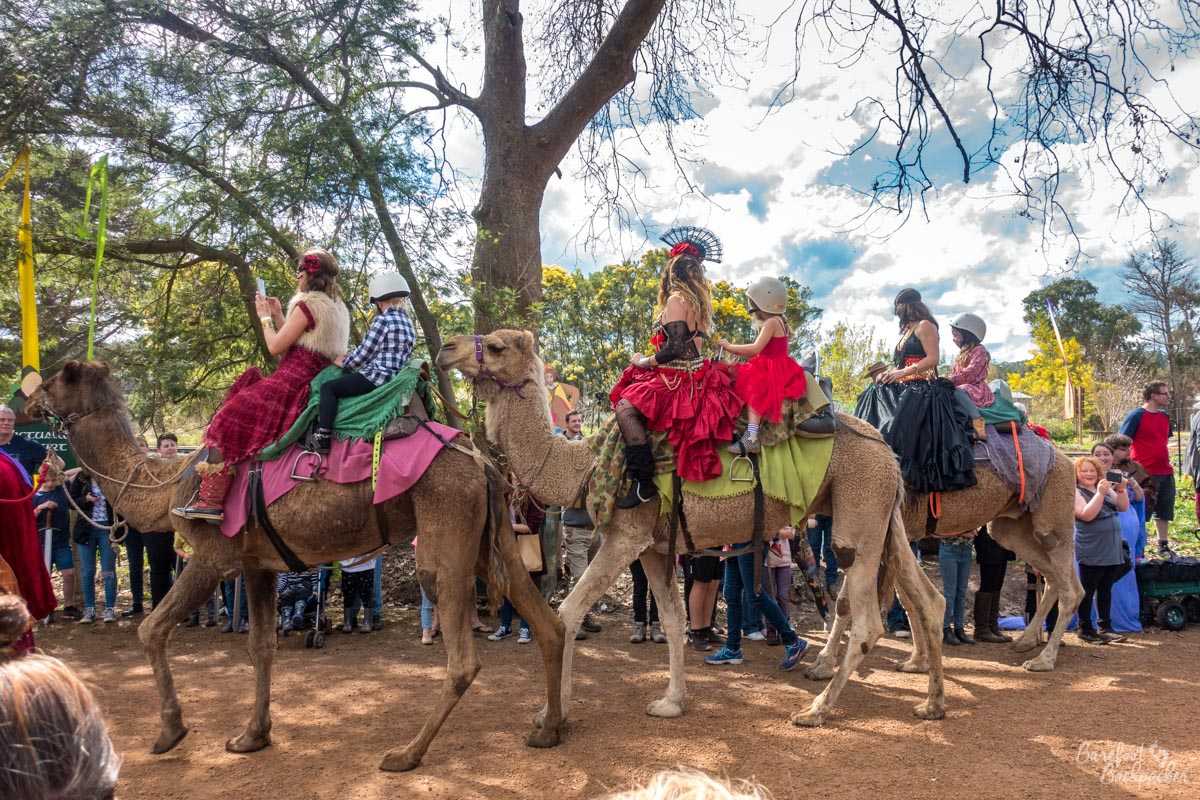
Camels in the welcoming parade. Hope they packed some ointment.
The festival itself was I think larger than I expected, although still full of the usual hippie tat that these festivals make a killing on – crystals, wind chimes, colourful clothes, and food stalls selling all manner of things from ‘Genuine German’ hot dogs to Japanese katsu. My friend bought a pretty awesome coat whilst I took narcissistic foot-selfies in the mirror. Not uploaded though. I’m not that narcissistic…
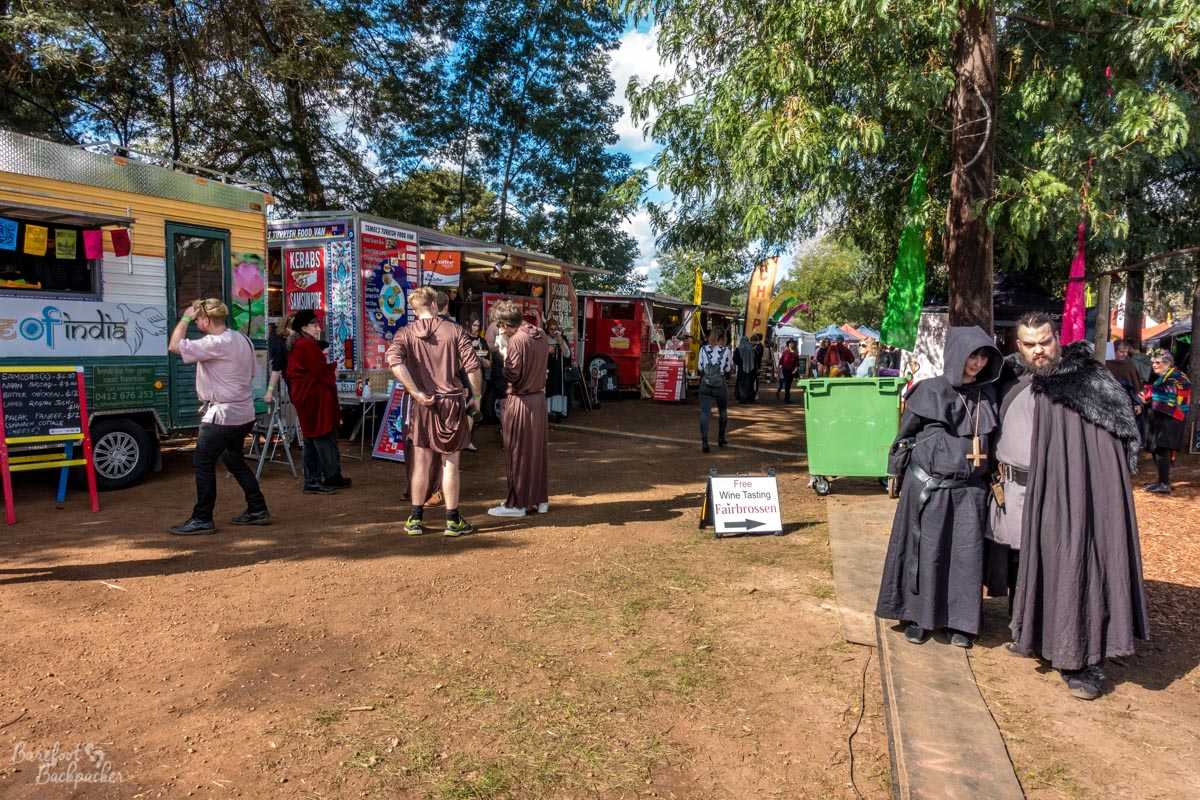
Some of the food stalls at the faire. You can see how people dressed up for the occasion.
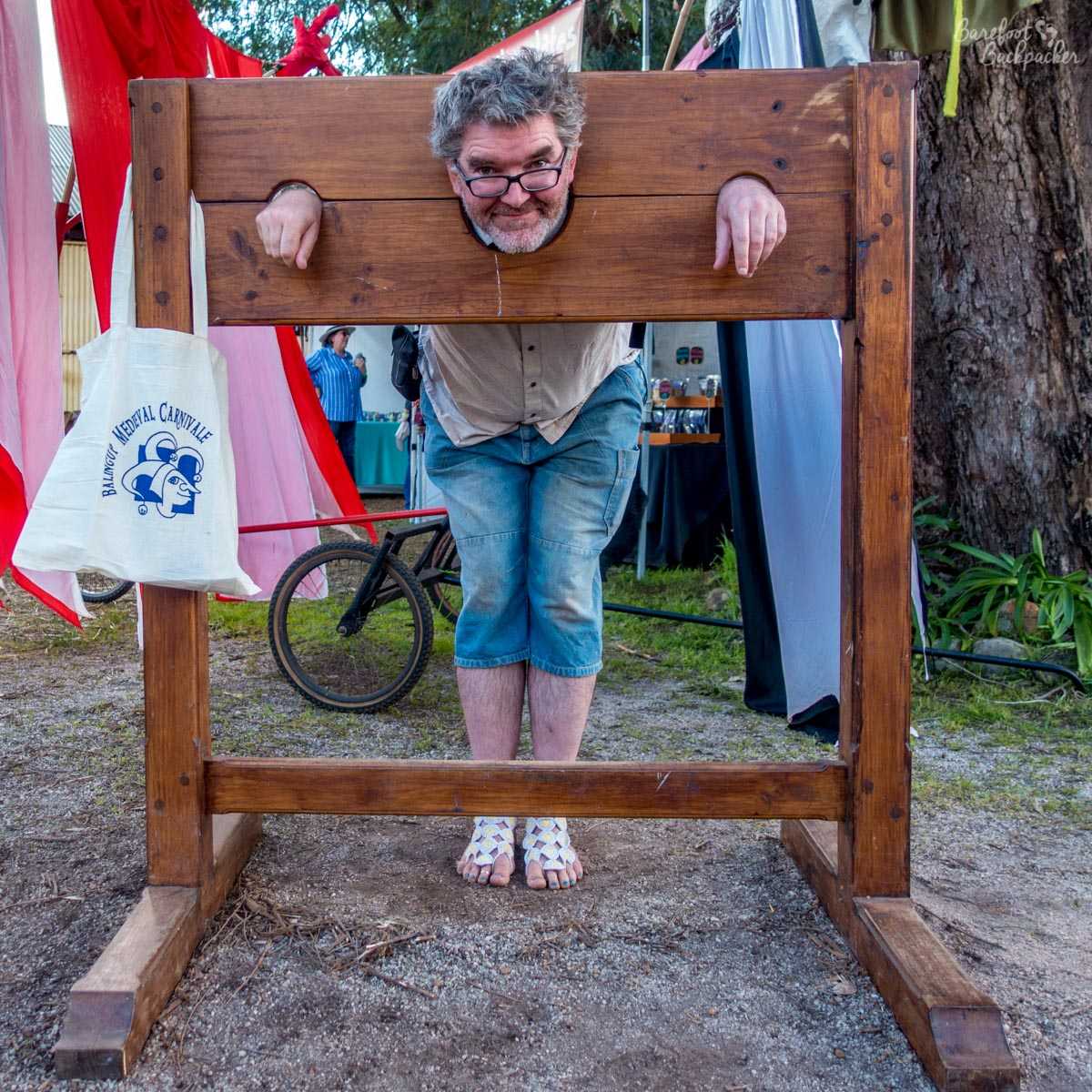
A pillory. Note that, unlike many other devices at events, this one was not possible to escape from on your own. I’m surprised Shelly wasn’t tempted to leave me in there tbh.
One of the main attractions was the battle representations. A couple of companies were there dressed in period costume and undertook replica jousting / mock battles to the delight of the audience. Of course it was all played for show – the group we saw asked the audience for suggestions as to what each participant should fight with (one was given a plastic sword) but of course the whole battle scene was orchestrated to good effect regardless of what the audience said. Still, it kept the kids happy!

“The Free Company” doing battle re-enactments.
Gnomesville
Shelly warned me about this place on the drive there. Well, ‘warned’ is possibly the wrong word, maybe ‘set certain expectations’ for it. I have to say, my expectations were met.
The way she described it was as follows: “It’s a place with lots of garden gnomes, by the side of the road. At first you think it’s quite cute and quirky, but the longer you stay there and the more you realise how big it is, it just becomes ‘creepy’.”
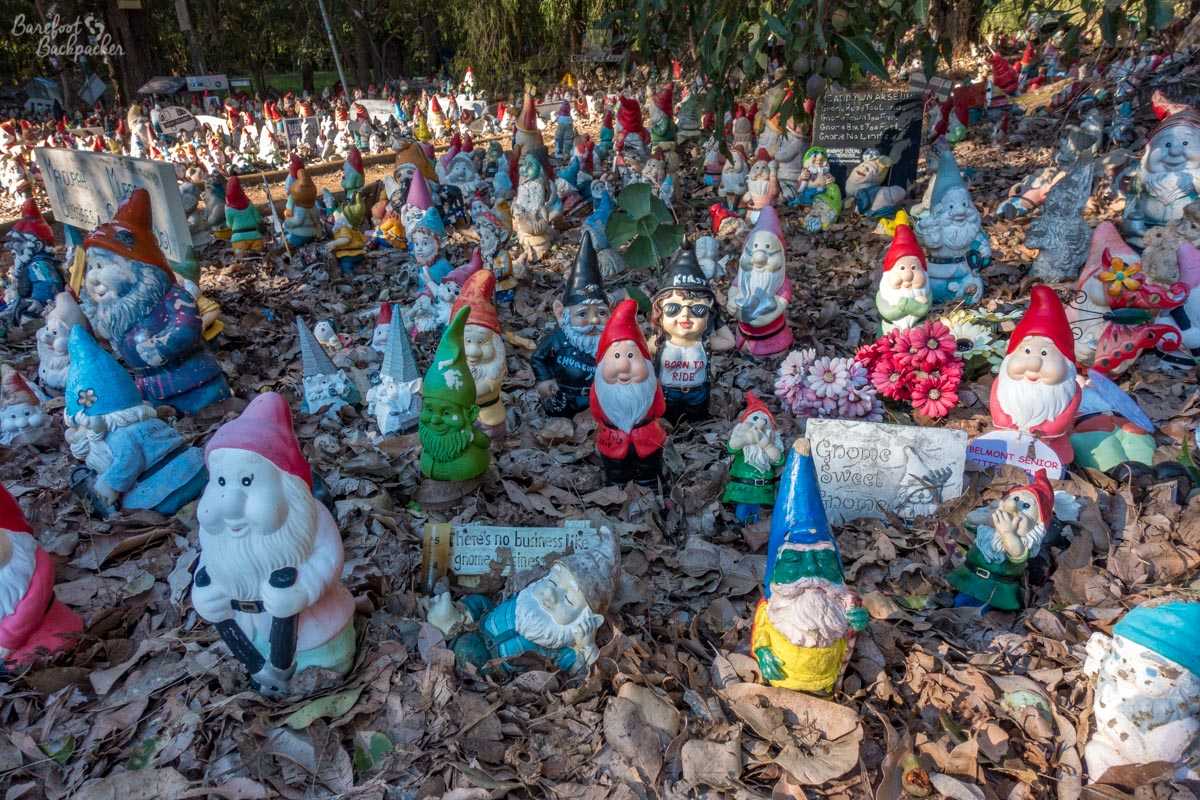
A selection of the gnomes near the entrance to Gnomesville.
It doesn’t look that special when you turn up to it – at first place it looks like a small array of gnomes in a lay-by, similar to what you may find at the entrance to a small garden centre. It’s set in the trees, in front of farmer’s fields, so you can’t really get a feel for the size of the place. There’s a couple of paths into the woods, and walking along them you feel ‘well this is cool, but it’s not that big (wide), is this it?’. That is, until you realise that the paths never seem to end, and when you look up, there are gnomes lining the sides of the path, loitering at the junctions of paths, hanging from trees … as far as your eye can see.
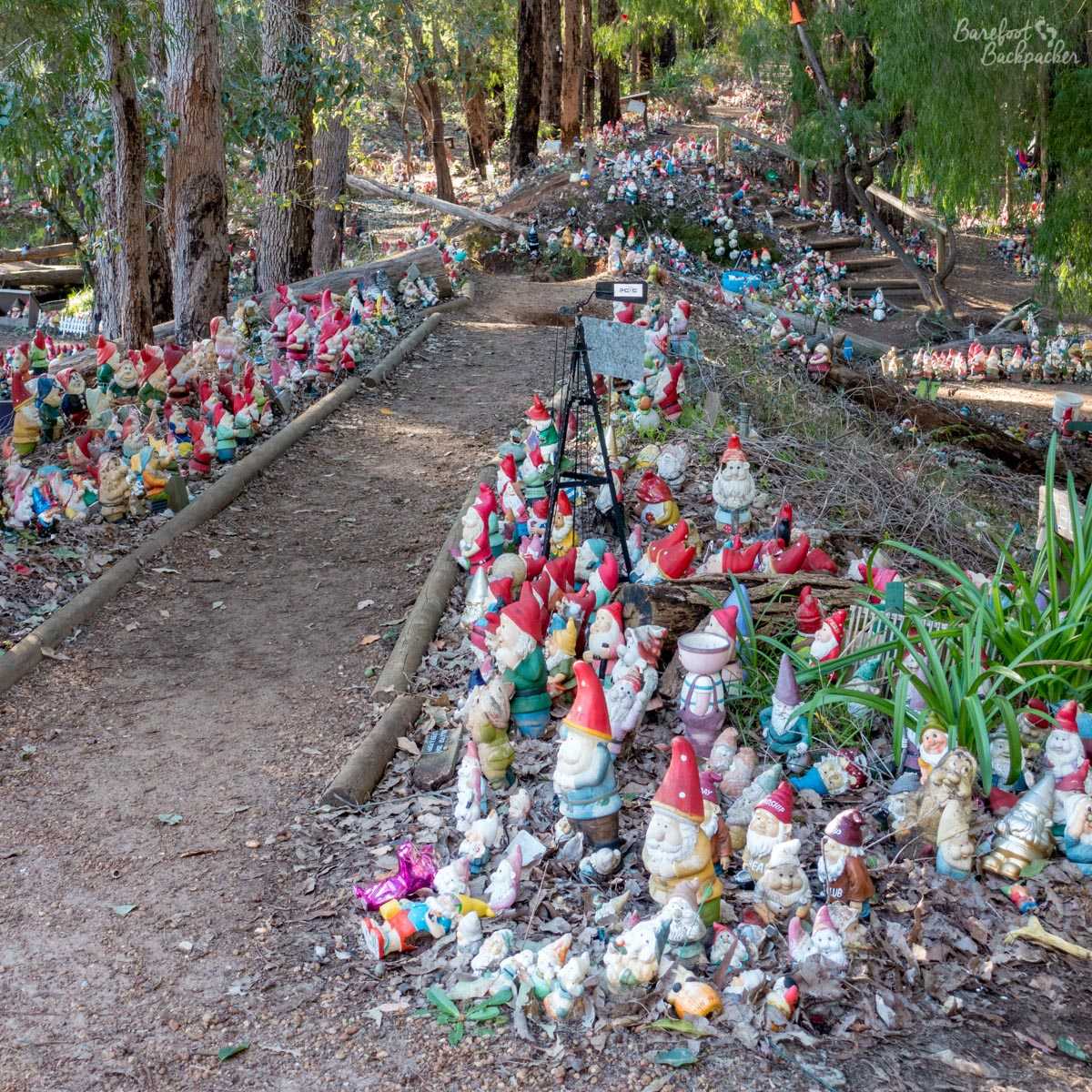
Gnomes. As far as the eye can see!
No-one’s quite sure how many gnomes there are in Gnomesville, though estimates of between 3-5 thousand have been touted. There was a big flood recently that killed (if that’s the right word) quite a number of them, but since then their numbers have swelled once more.
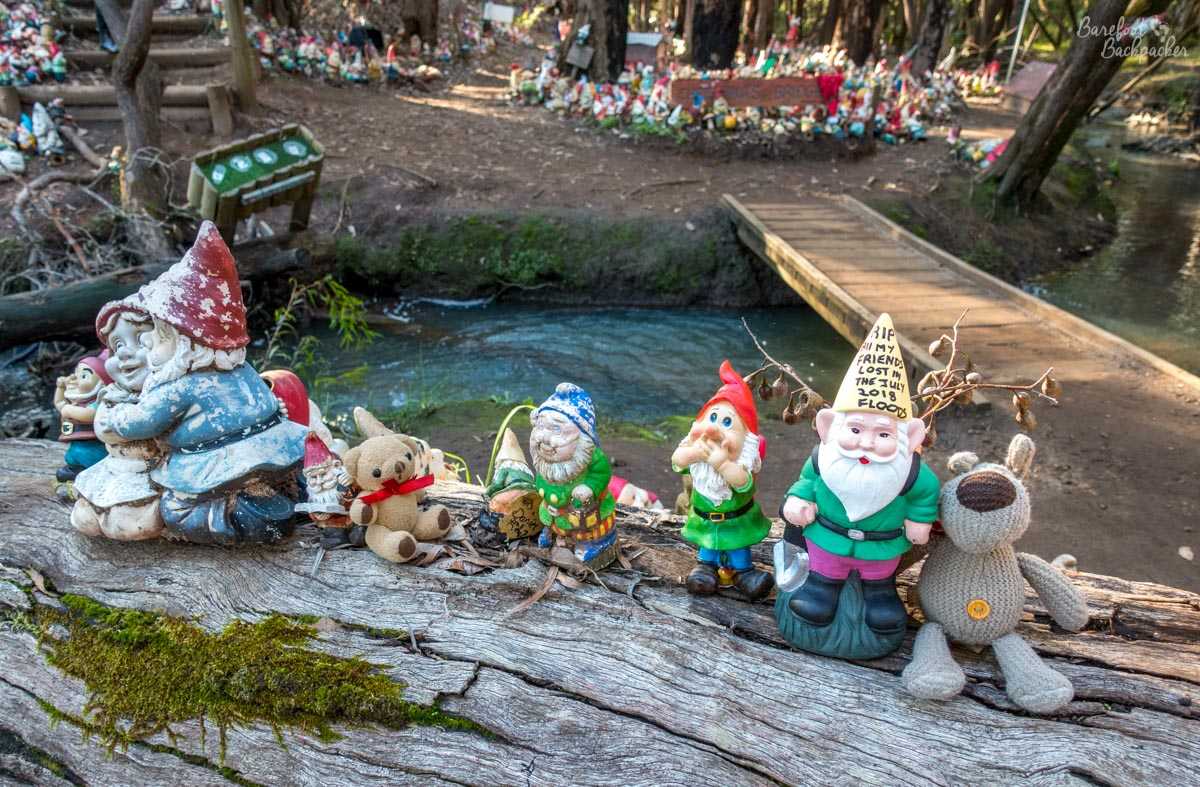
One of the gnomes sitting here has a memorial note to the 2018 flood. He was being kept company by my two friendly travelling companions.
While mostly Australian, there are gnomes from all over the world living here, reflecting maybe the multiculturalism that many of us strive towards. And there’s no antagonism or racism here; every gnome lives happily with its neighbours. There are gnomes of every type and walk of life here – from sporty ones, to academic ones, to adventurous ones.
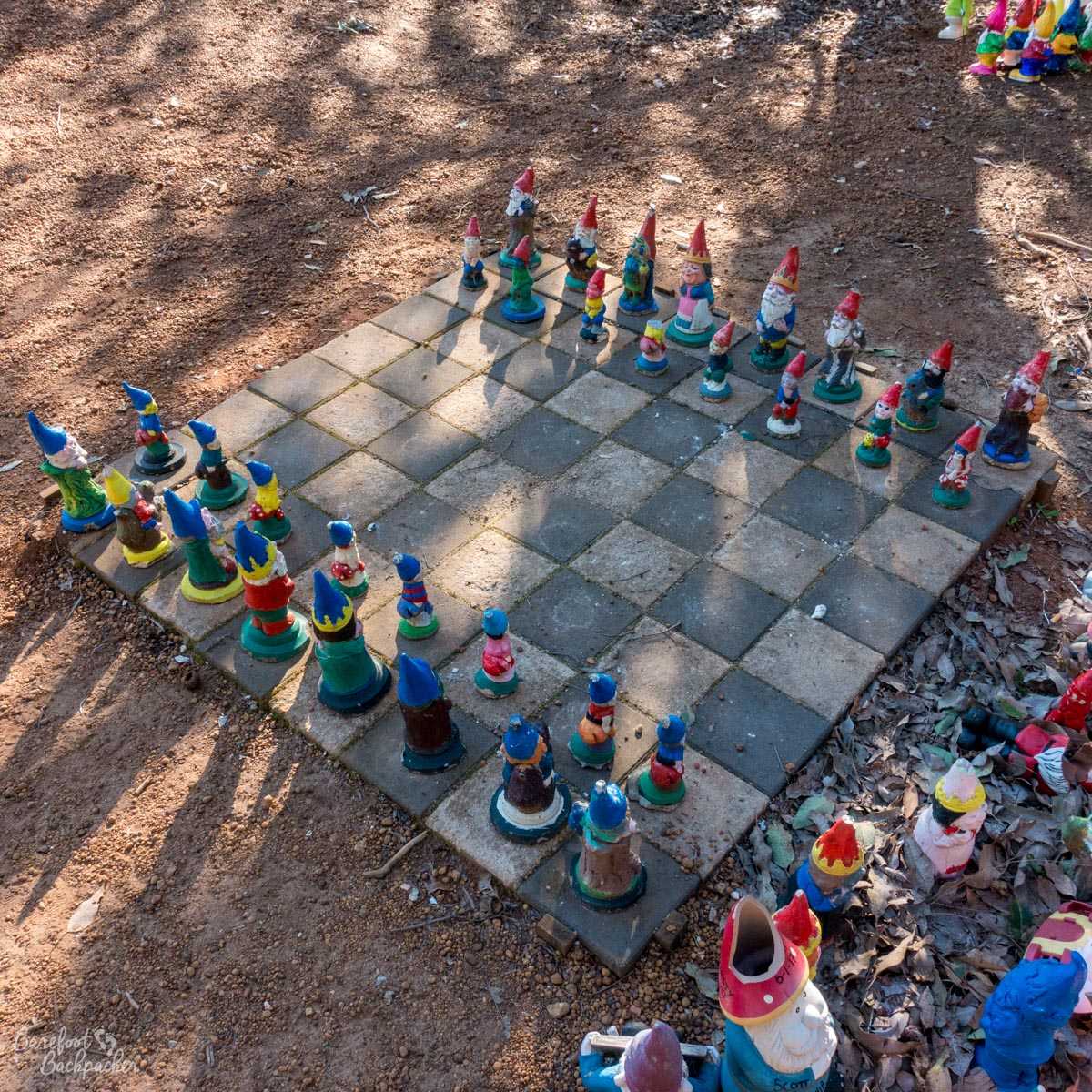
A chessboard of gnomes.
The history of Gnomesville is murky. Legend states that a wandering gnome got confused after walking around a roundabout too many times, didn’t know where he was, but looked to the side of the road and though ‘that looks like a nice place’, and stayed. Over time he was joined by other gnomes who’d passed by and been equally entranced, and soon word spread. An alternative legend is that a gnome objected so much to the expansion of a road junction and creation of the roundabout that he settled on the side of the road as a silent protest, and was quickly joined by other gnomes in solidarity.
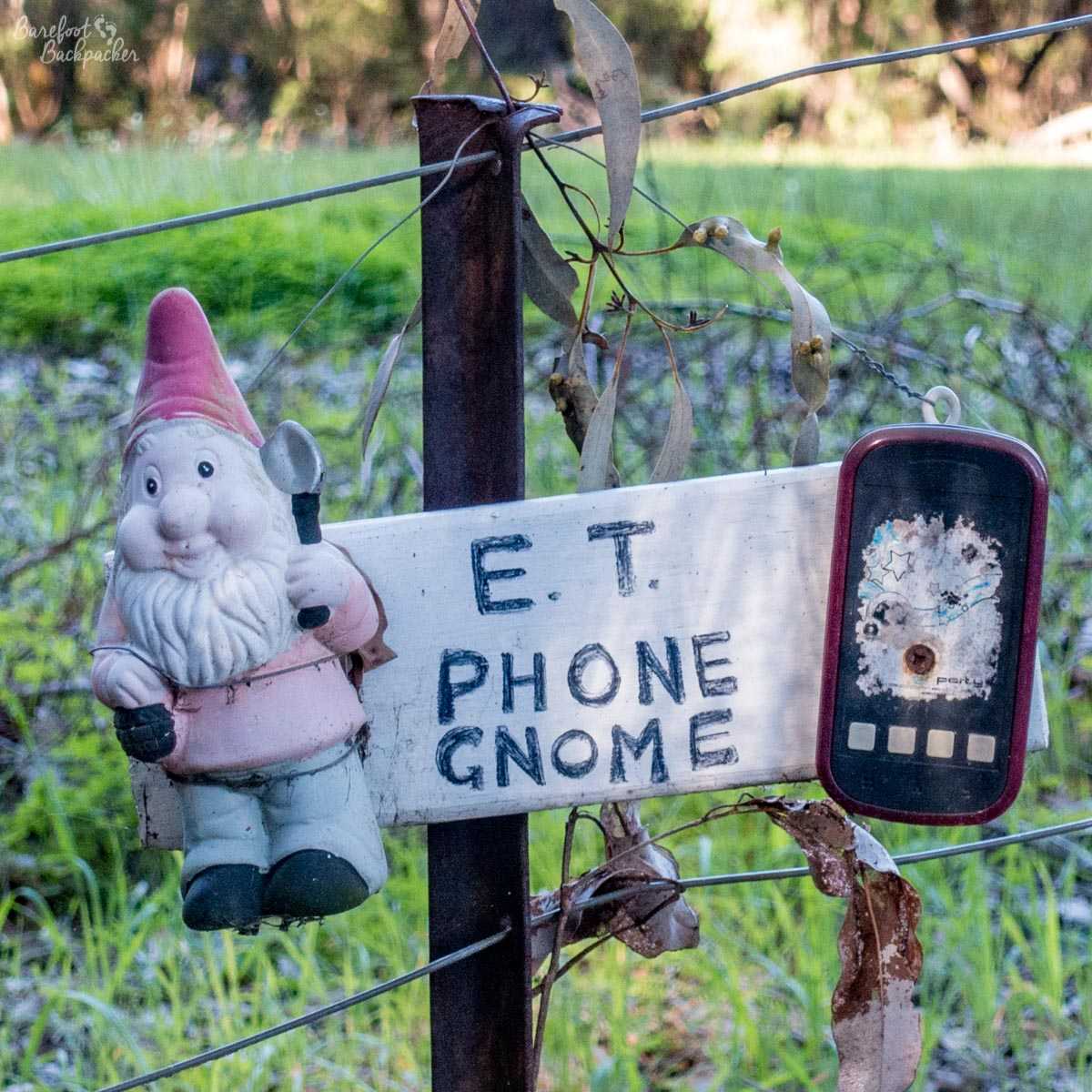
You can see the sort of humour that penetrates this site – Gnomesville doesn’t exactly take itself too seriously.
Whatever the truth, these days people are more than willing to donate their gnomes to this worthy place, and it just keeps expanding. Often, groups/societies provide a series of gnomes that represent themselves. Some people even place gnomes here as a way to memorialise their family or friends after death, which … sounds slightly weird but why not?!
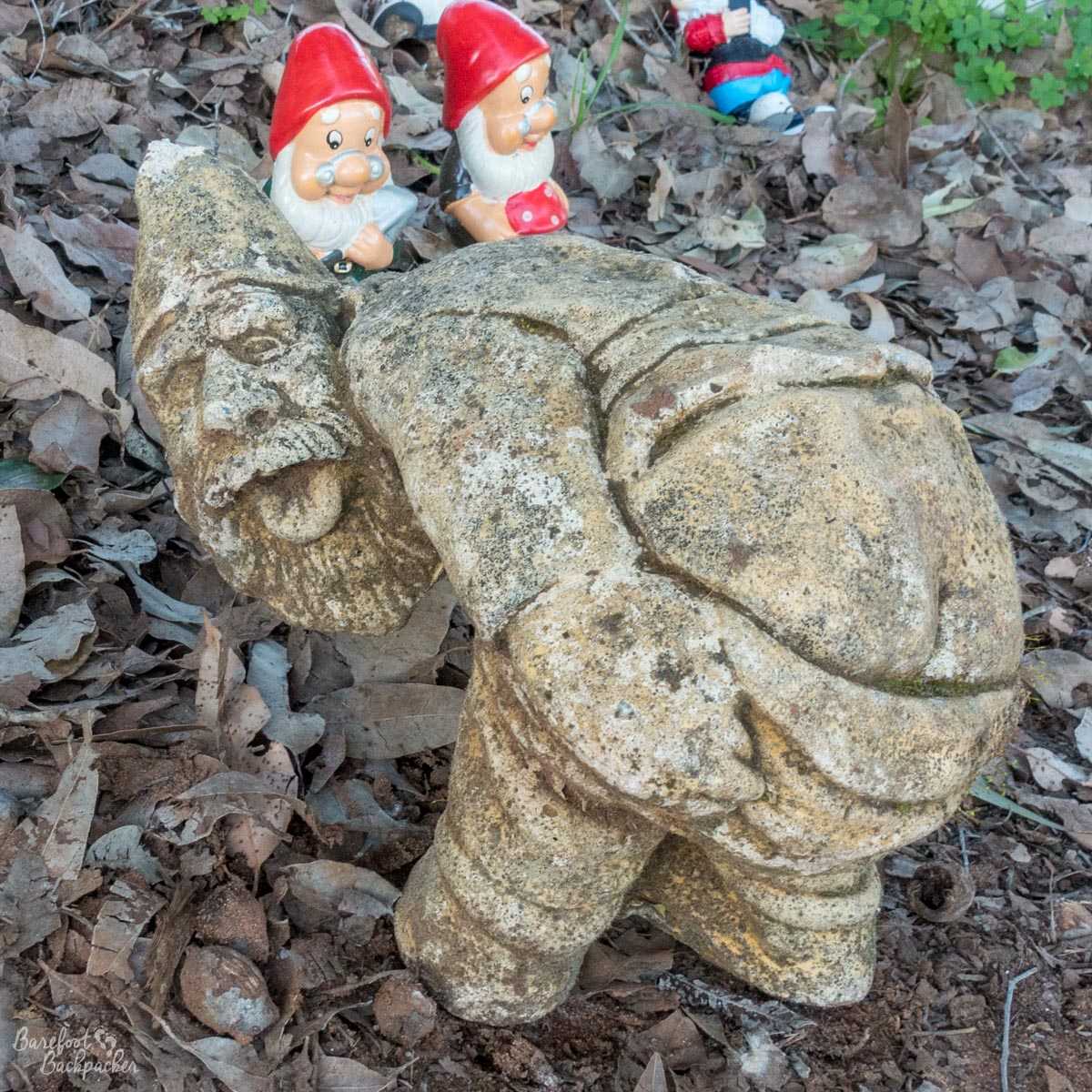
Well, quite. “Chucka Browneye For Australia”.
Lake Clifton Thrombolites
Thrombolites are, according to Wikipedia, the “clotted accretionary structures formed in shallow water by the trapping, binding, and cementation of sedimentary grains by biofilms of microorganisms, especially cyanobacteria.” I hope that’s clear; clear as mud, maybe.
Basically, they’re small and shaped like a roughly-hewn paracetamol tablet or pound coin. And while they may look like it at first glance, they are not quite what you might call ‘rocks’. Rather, they are the by-product of a very primitive form of life. They are very similar to Stromatolites (though the latter are more structured), and one could argue they are our ancestors. Not these particular thrombolites, but thrombolites in general – the cyanobacteria that created them evolved into all the life on Earth. Assuming you’re not a creationist, though note that thrombolites aren’t mentioned in the bible. Nor are kangaroos, and they blatantly exist …
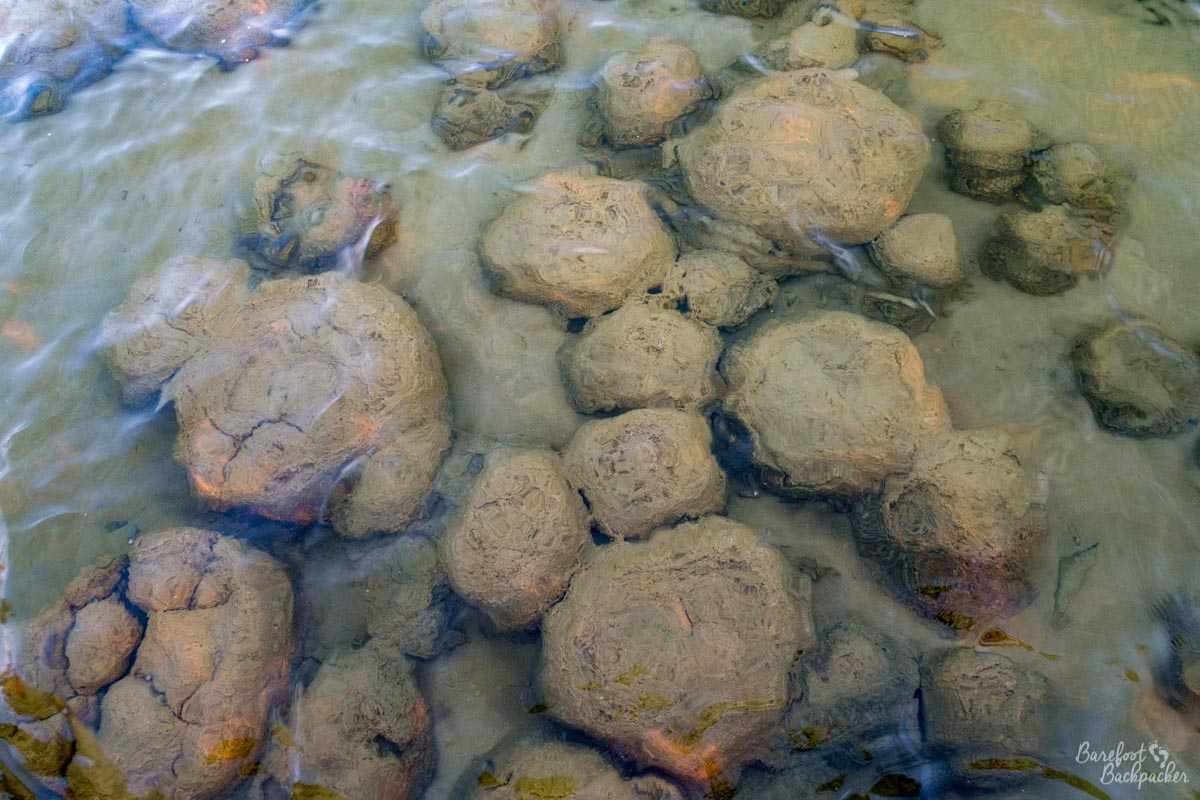
Thrombolites under the water at Lake Clifton.
There’s not many places left in the world that thrombolites and stromatolites still exist, but Western Australia has a number of sites; there’s a lake North of Perth near Cervantes that’s noted for them for instance, but we went to one 100km or so South of Perth, at Lake Clifton.
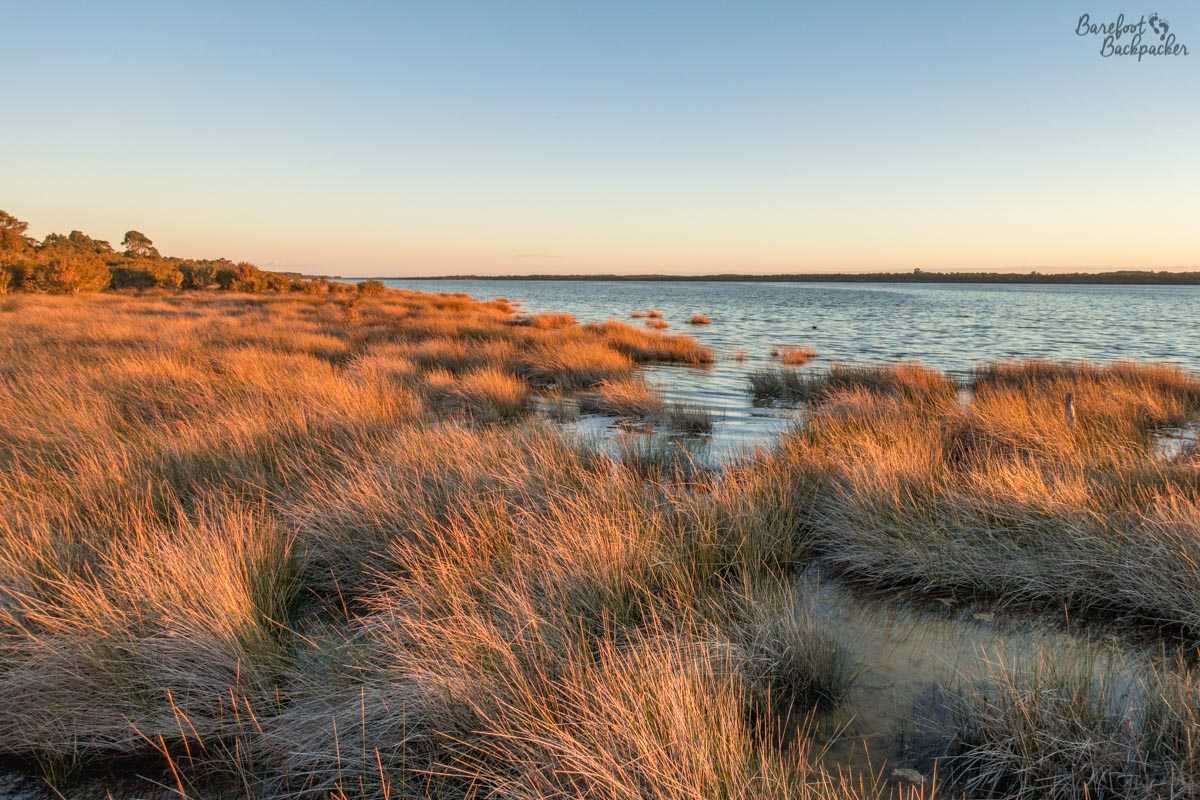
View across the edge of Lake Clifton.
The lake is a long, thin, lake that runs parallel to, and very close to, the ocean; there’s a number of lakes in the area like this. It’s also reasonably flat, which makes it a great place to watch the sun set. Although the lake itself is quite large in total (around 21km long and 1km wide), the majority of the thrombolites are located mainly in an area on the north-east side of the lake – the thrombolite reef is estimated to be around 120m wide into the lake, and around 6km along it. At one point along the lakeside there’s a short boardwalk that ends just over the water so you can see them close-up – indeed in summer, when the water level is lower, they appear above the water.
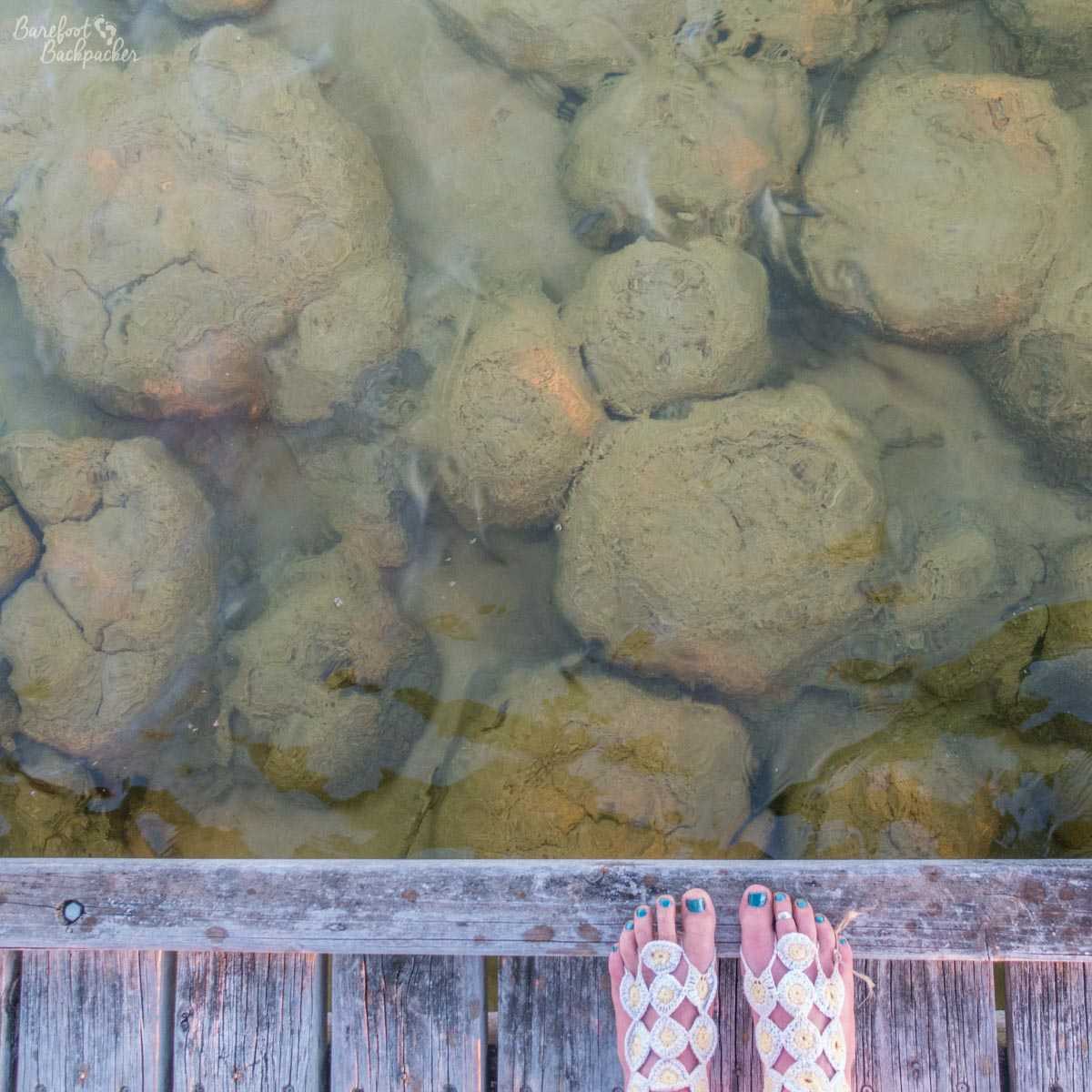
Thrombolites under the water at Lake Clifton; this is how close you can get to them.
It’s also a good place for birdwatching if that’s more your thing – while a frequent nesting site for birds from the islands around New Guinea and the like, some migrate from as far away as Siberia.
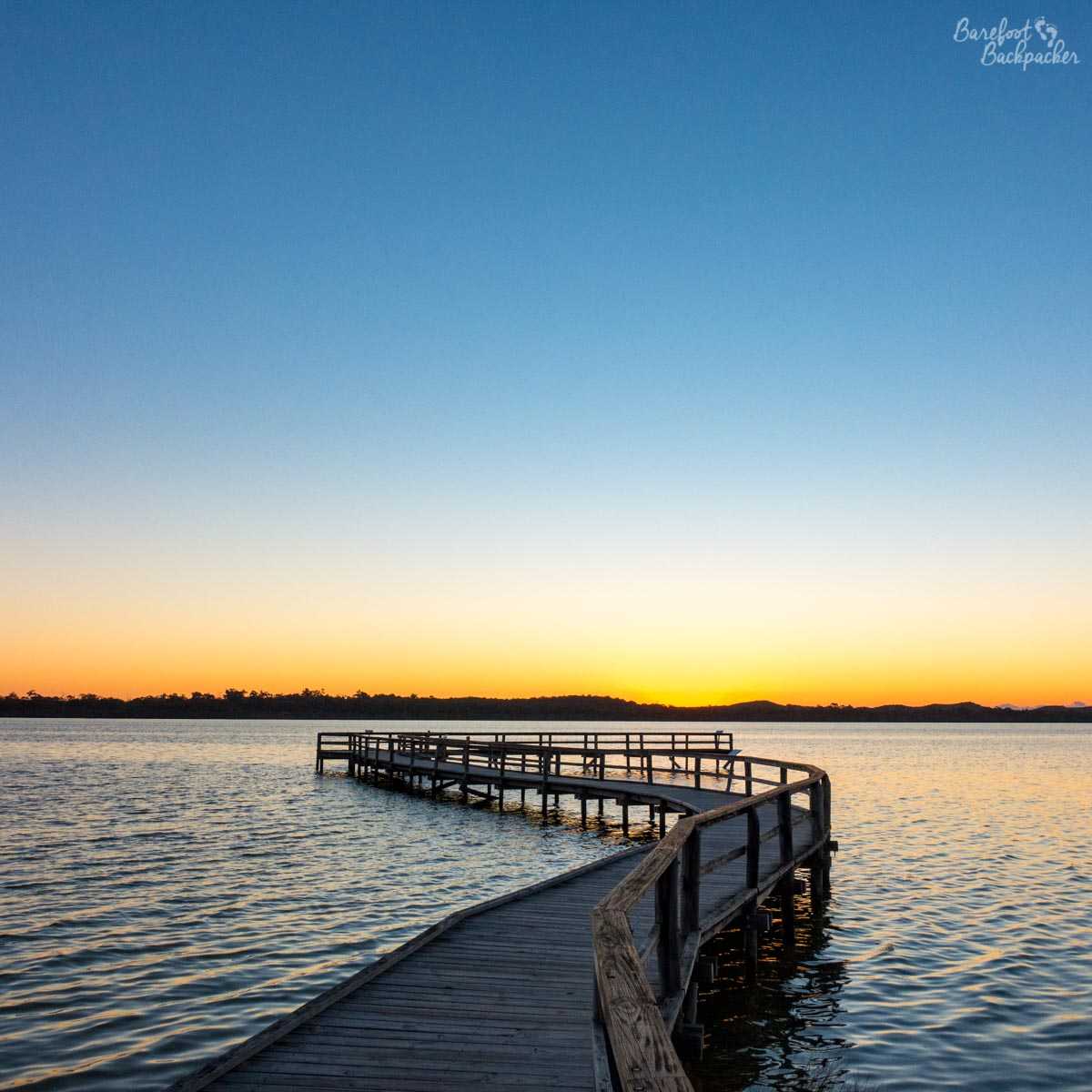
View over Lake Clifton at sunset.
New Norcia
Compared with the surroundings, the town of New Norcia feels remarkably out of place. And, to be fair, this is reflected in its history.
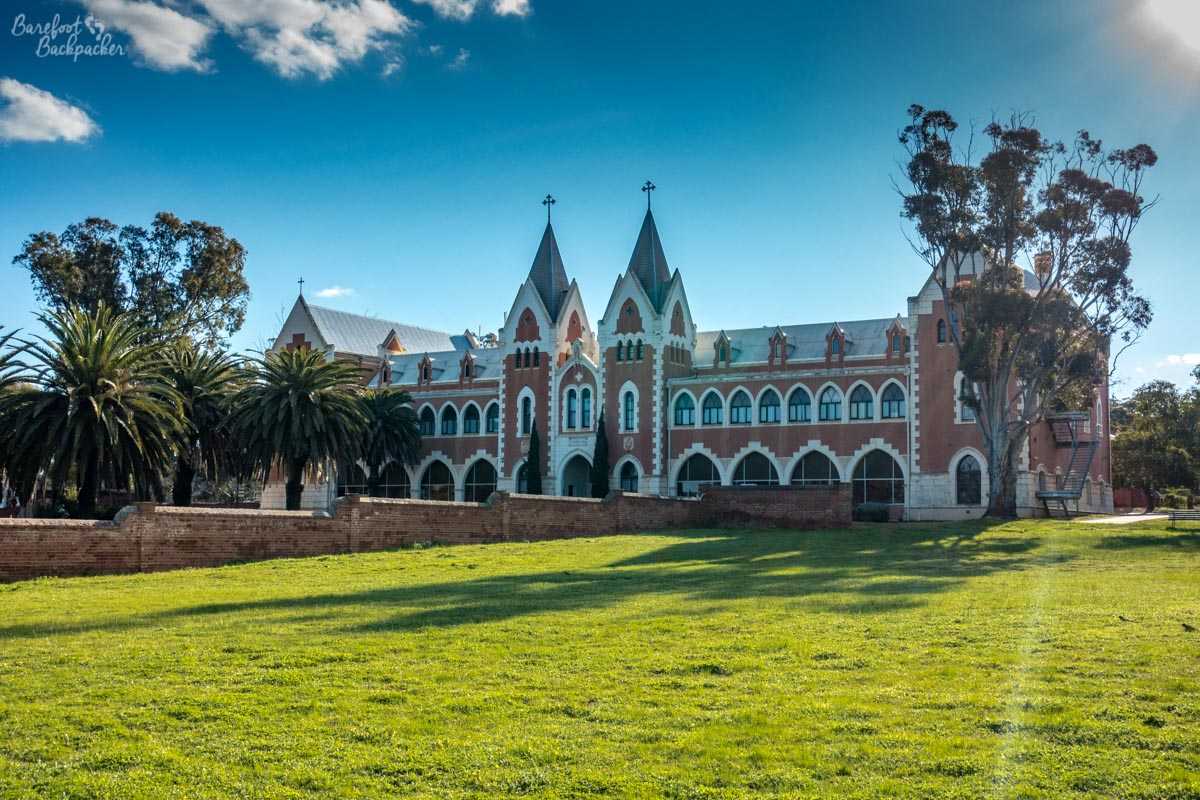
St Gertrude’s College, New Norcia – one of the old boarding schools.
New Norcia (named after Norcia in Italy, the birthplace of St Benedict) is what is purported to be Australia’s only Monastic town. This means the town is dominated by quite traditional European-style buildings, possibly Spanish – the town was founded by two Benedictine monks from Spain in 1846-47 – but certainly of a style that feels almost ‘wrong’ compared with the rest of Australia as a whole, never mind this part of Western Australia.

St Ildephonsus’ College, New Norcia – another of the old boarding schools.
The town has, amongst other things, the monastery itself, two boarding schools with associated student halls of residence, and a quite picturesque church (albeit a little plain on the inside), all set in large blocks of flat, manicured, lawnscape. The place it brings to mind most, of all the obscure things, is Olivet College in Michigan (a place I know quite well given I have several friends who went there in the mid ’00s), which was also originally a religious-founded university. The buildings have chapels and other decorated rooms inside, but it being late on a Sunday at the time of our visit, they were closed.

The Abbey Church, New Norcia.

Inside the Abbey Church, New Norcia.
Obviously, being a monastery, that means one thing. Shelly was keen on sampling the homemade bread. I … may have made a beeline for the hotel and bar, because if there’s one thing I know Benedictine monks do well, it’s beer. Needless to say I was not disappointed.
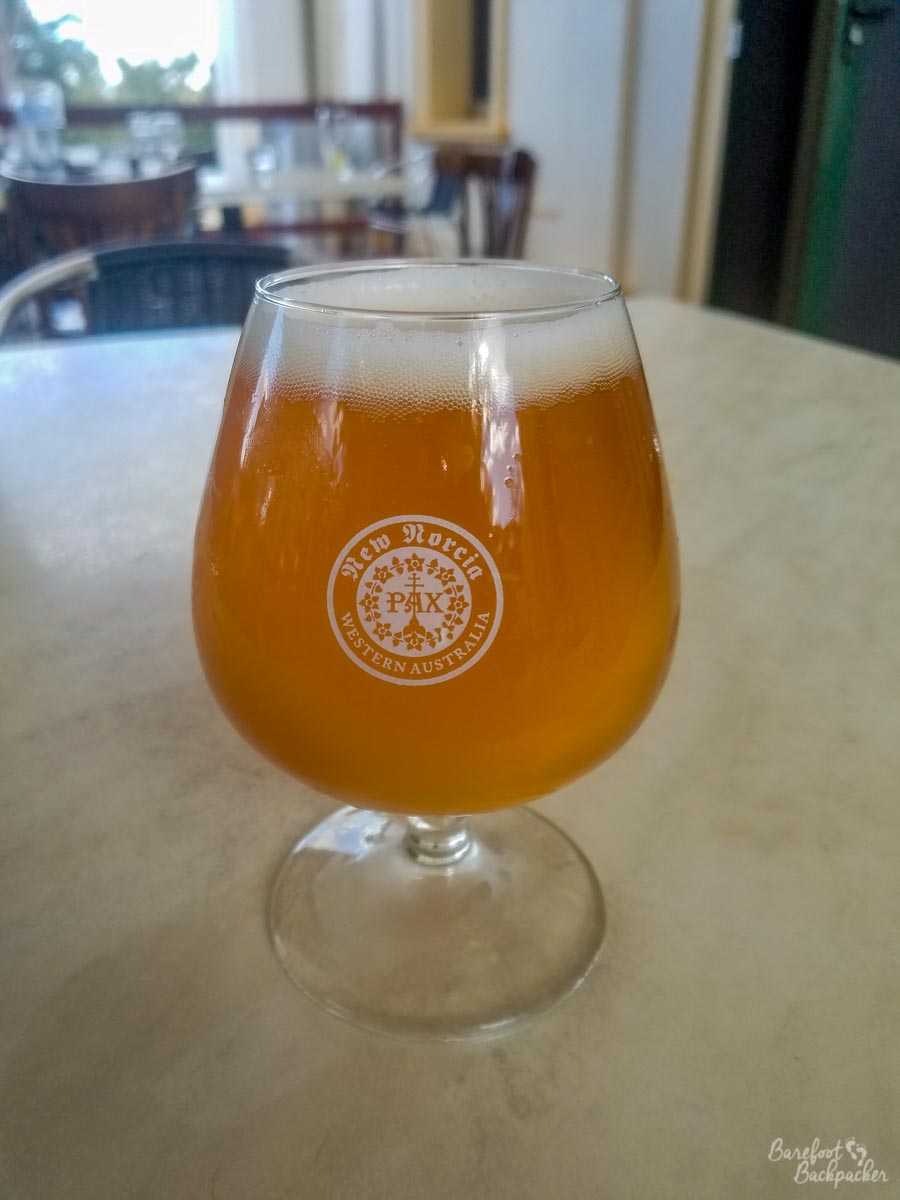
New Norcia Abbey Ale. 7.3%. Pale, hoppy, a little flowery, and definitely Belgian in style.
The Pinnacles, Cervantes
Technically known as the Nambung National Park, ‘The Pinnacles’ are around 3 hours North of Perth. My expectations were very different from reality – I was expecting a barren, empty, field with a couple of huge menhir-like stone columns stuck in place in the middle. What I got was … well, pretty much the opposite in almost every respect.

The landscape of The Pinnacles; you can see how each rock has been worn away by wind and sand.
Lying a little way off the main road, about 10-15km outside the fishing village of Cervantes, The Pinnacles are quite a bizarre and alien thing to behold. The first thing to note is the size of the park itself; there’s a designated road (using the term somewhat loosely – ‘specifically designated area of flattened sand’ is probably closer) around them that’s about a 4km circle – so much more than the handful of large stones I was expecting. There’s also a footpath that weaves through them.
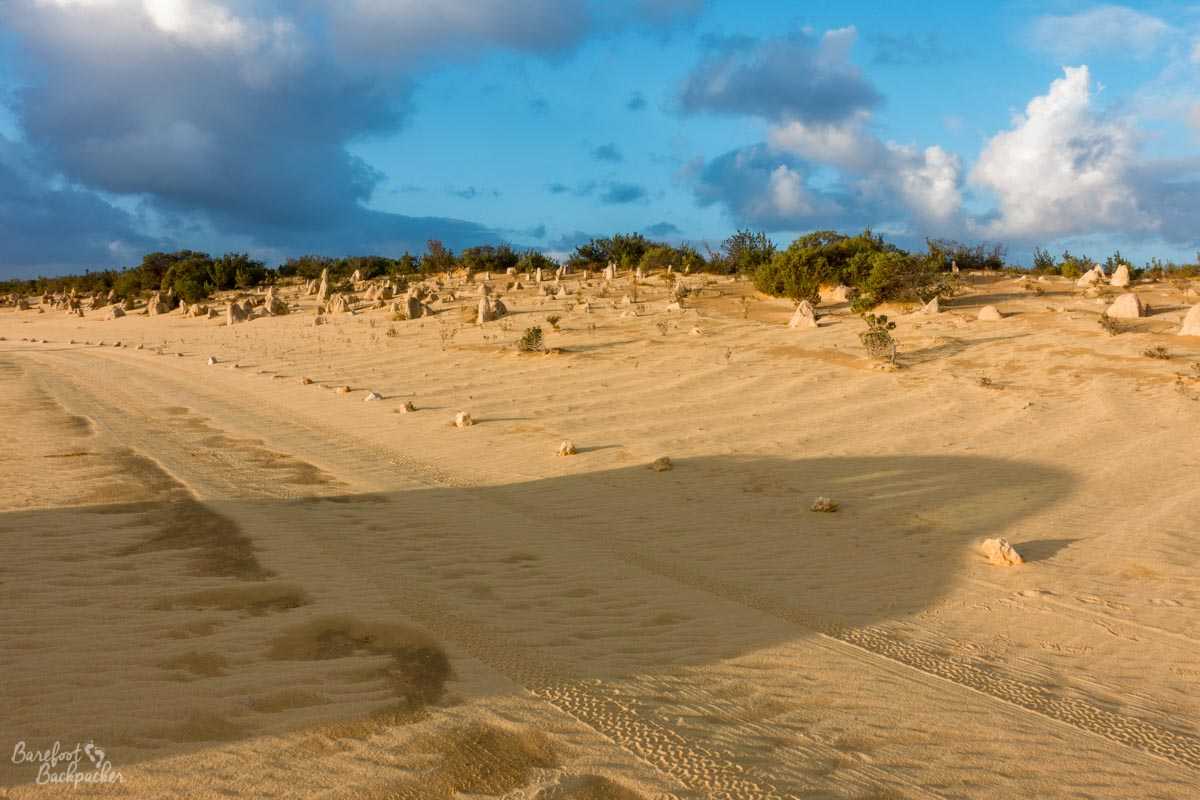
The road through The Pinnacles, with some smaller rocks behind.
The Pinnacles themselves are a series of thousands of small (human-sized, for a given sample of humans) limestone rocks that have been sandblasted and blown over millennia into their current shapes – limestone being quite easy for nature to mould into different shapes and sizes. The landscape has been compared to ‘lunar’, but a closer adjective might be ‘alien’ – it’s certainly unlike most of the rest of Planet Earth.
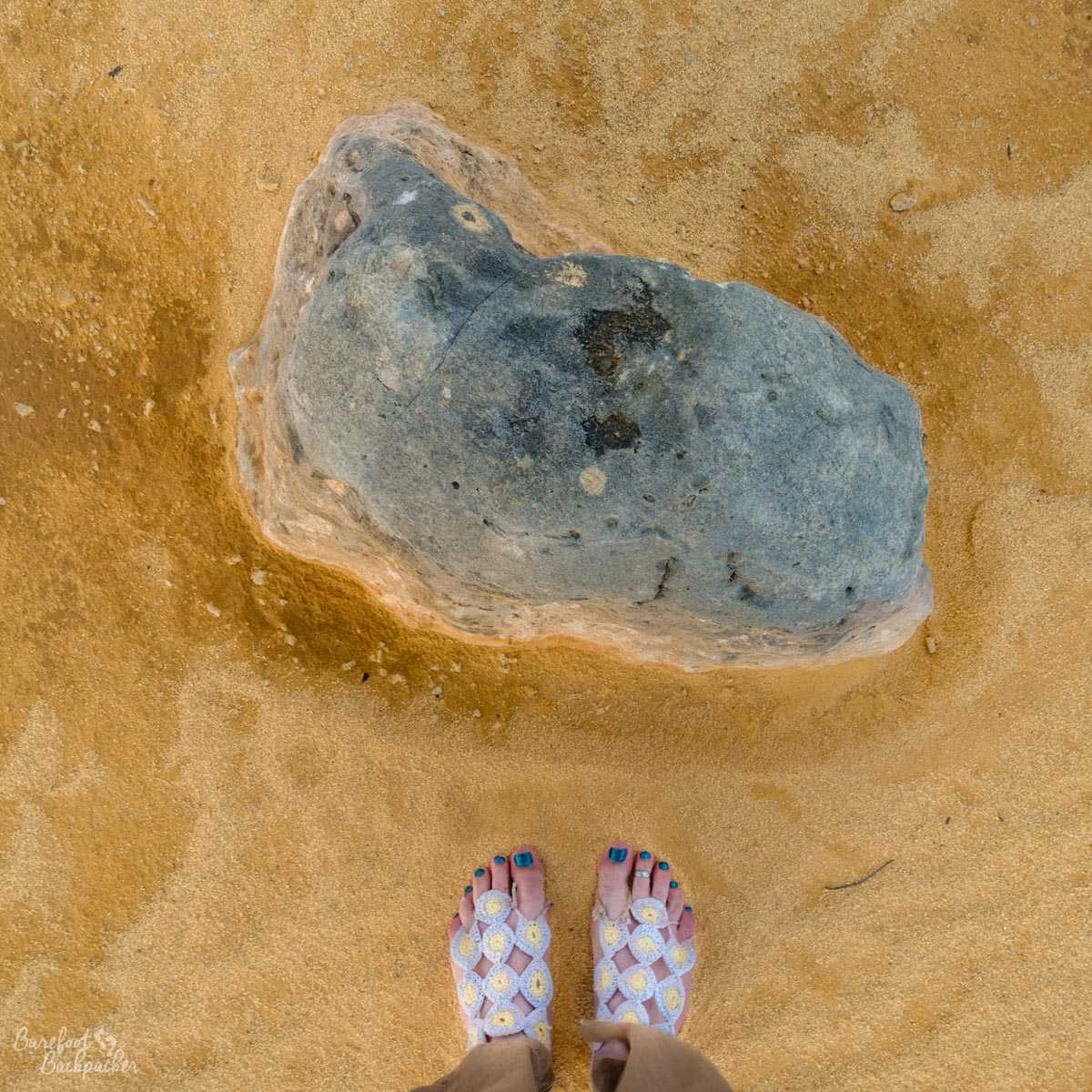
One of the rocks at The Pinnacles, as seen from above. Feet for size reference.
It’s a great place to see the stars, if you were there after sunset, as the light pollution is virtually non-existent, and in the darkness the stones provide eerie context and would be the default landscape for a moody sci-fi film. Alas on our visit it was very cloudy and exceptionally windy, making even standing up quite tricky (this was before any alcohol!), so we didn’t stay for sunset, though I understand Shelly has been back since with good effect.
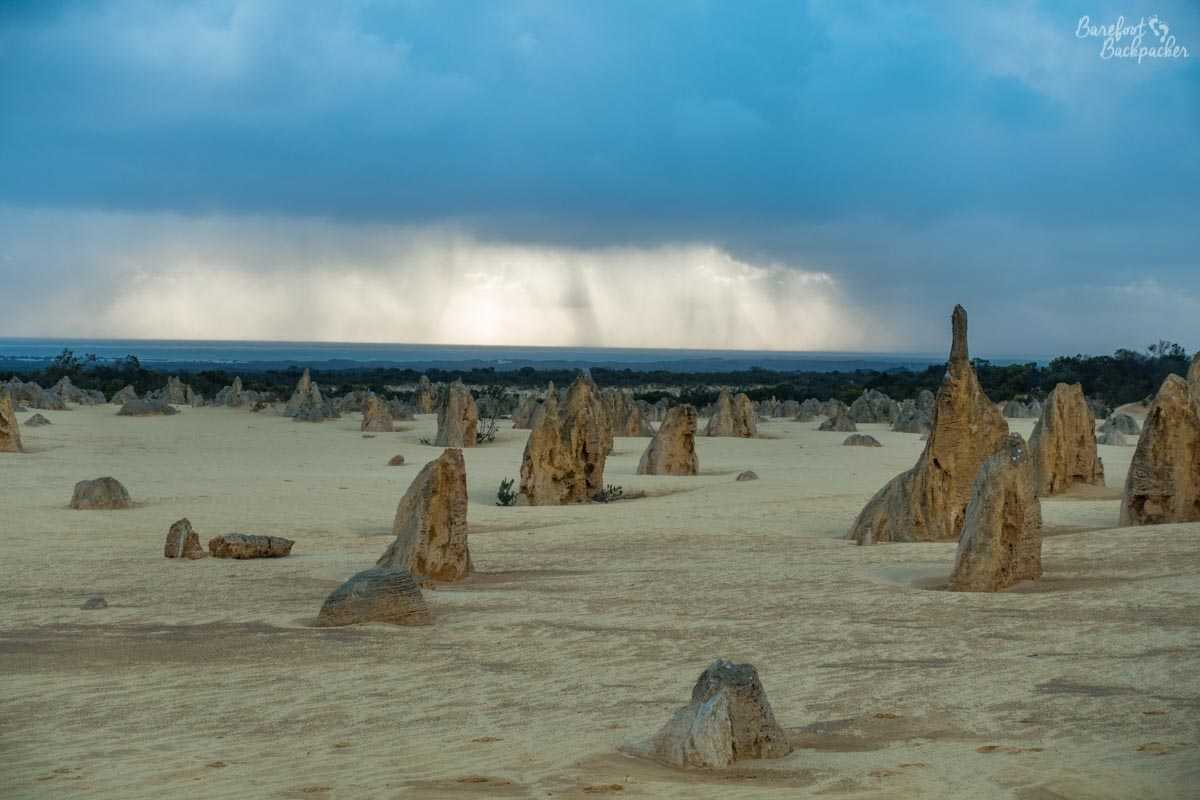
Close to sunset; while it looks quite atmospheric, chances of seeing stars was very low.
Cervantes town itself is small but quite quirky – not only is the road to it lined with odd sculptures that would have been interesting to explore had the weather not been describable as ‘squally’, but as mentioned above, there’s also another lake nearby (Lake Thetis) with Stromatolites. Also nearby are the Lancelin Dunes – great for dunesurfing, apparently – though you need a 4×4 to get there and, er, we didn’t. Also, rain.
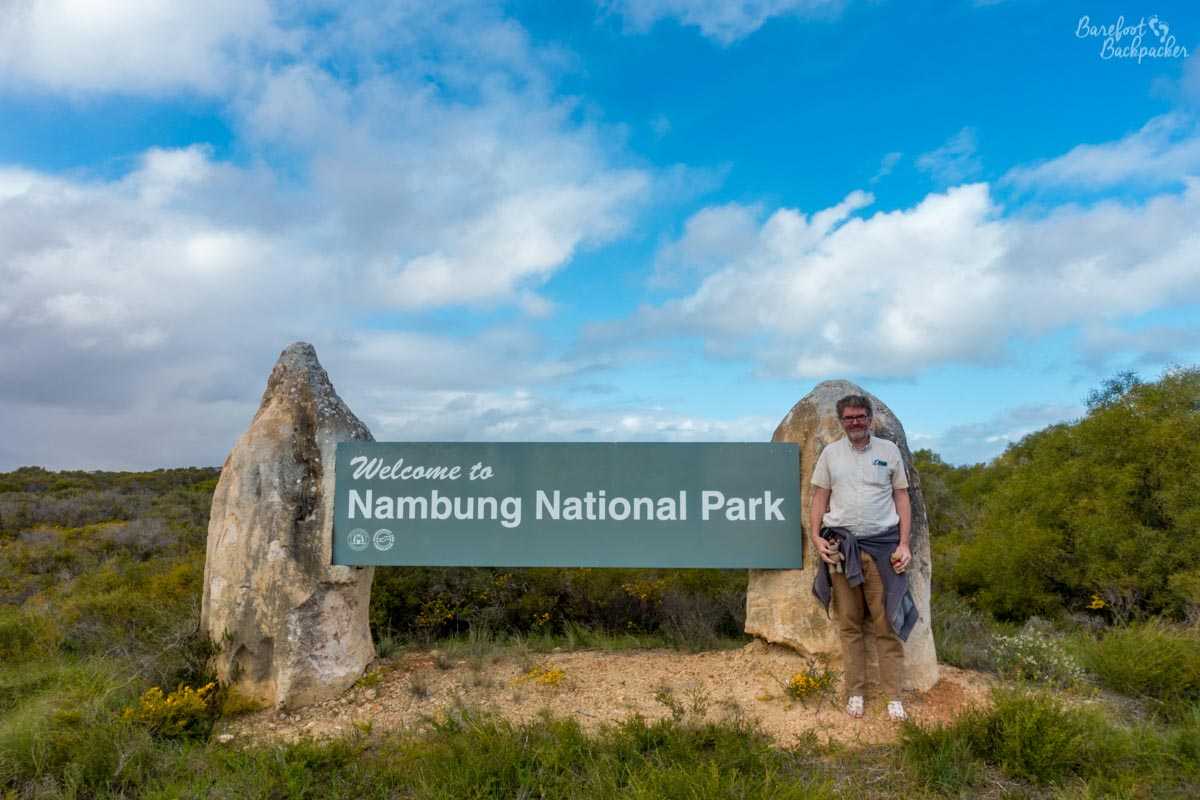
Nambung National Park welcomes The Barefoot Backpacker, Baby Ian, and Dave.
—–
Like this post? Pin it!!

Dates visited: 26 August 2018, 29 August 2018, and 2 September 2018
Memories of home 🙂 We haven’t seen the gnomes though … loved the gnome chessboard. The first time I saw the Pinnacles I too was blown away, I expected just a few rocks – it’s pretty spectacular, isn’t it? We saw them at sunset and the golden light on the rocks was surreal. Thanks for this post – really enjoyed reading.
Thank you 🙂 We tried to head to the Pinnacles for some sunset shots, but the wind was just far too strong for us to take good pictures. My friend has been back since for a better evening and it does look like an awesome place in that light! Ah, the gnomes, well, yes, I mean … what can I say! Odd …